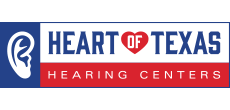
Your hearing can be damaged by a loud workplace and it can also impact your focus. Your hearing health can be negatively affected by even modest levels of noise if you’re exposed to it for numerous hours every day. This is why questions like “what hearing protection do I need?” are worth asking.
It isn’t common knowledge that several levels of hearing protection are available. But it seems logical when you stop to consider it. A truck driver won’t need the same level of protection that a jet engine mechanic will.
Levels of Hearing Damage
The fact that 85dB of sound can begin to damage your ears is a standard rule of thumb. We’re not really used to considering sound in decibels (even though that’s how we calculate sound – it’s just not a figure we’re used to putting into context).
When you’re sitting in your car in city traffic, that’s approximately 85 decibels. That’s not a big deal, right? Wrong, it’s a big deal. It becomes a big deal after several hours. Because it’s not just the loudness of the noise that you need to be aware of, it’s how long you’re exposed.
Typical Danger Zones
It’s time to consider ear protection if you’re exposed to noise at 85 dB or louder for 8 hour days. But that’s not the only threshold you should be aware of. If you’re exposed to:
- 90 dB (e.g., lawnmower): injury will begin to occur to your hearing if you’re exposed to this level of noise for 4 hours a day.
- 100 dB (e.g., power tools): Anything over one hour will be harmful to your hearing.
- 110 dB (e.g., leaf blower): Damage to your hearing happens after 15 minutes of exposure to this noise level.
- 120 dB (e.g., rock concert): If you are exposed to this noise level for any amount of time, your hearing can be damaged.
- 140 dB (e.g., jet engine): This amount of noise will cause immediate harm and probably pain to your ears.
When you are going to be exposed to these volumes of sound, wear hearing protection that will bring the volume in your ears down below 85 dB.
Make Sure Your Hearing Protection Fits Comfortably
The effectiveness of ear protection is quantified by something called a Noise Reduction Rate, or NRR. The higher the NRR, the quieter outside sound will be (temporarily).
The majority of workplaces will have recommendations as to what degree of protection will keep your ears safe because it’s important to have the correct protection.
But there’s another element to think about as well: comfort. It turns out, comfort is extremely important to keeping your ears healthy. This is because you’re not as likely to actually use your hearing protection if it isn’t comfortable.
Hearing Protection Options
You’ve got three basic options to choose from:
- Earplugs that stay just outside of the ear canal.
- Earmuffs.
- In-ear earplugs
Each type of protection has benefits and drawbacks, but the majority of your hearing protection choices will depend upon personal preference. Earmuffs are a better choice for people whose ears are irritated by earplugs. Other people might value the put-them-in-and-forget-them approach of earplugs (obviously, you won’t want to forget them for too long… you should remove them at the end of your workday. And clean them).
Consistently Use Protection That Works Best For You
Any laps in your hearing protection can lead to damage, so comfort is a significant factor. If earmuffs are scratchy and uncomfortable you’re more likely to remove them for short periods and that can have a negative impact on your hearing over time. This is why hearing protection that you can leave in for the full workday is the best solution.
You’re ears will remain healthier and happier if you choose the correct level of hearing protection for your circumstance.
Call Today to Set Up an Appointment
References
https://www.cdc.gov/nceh/hearing_loss/what_noises_cause_hearing_loss.html
